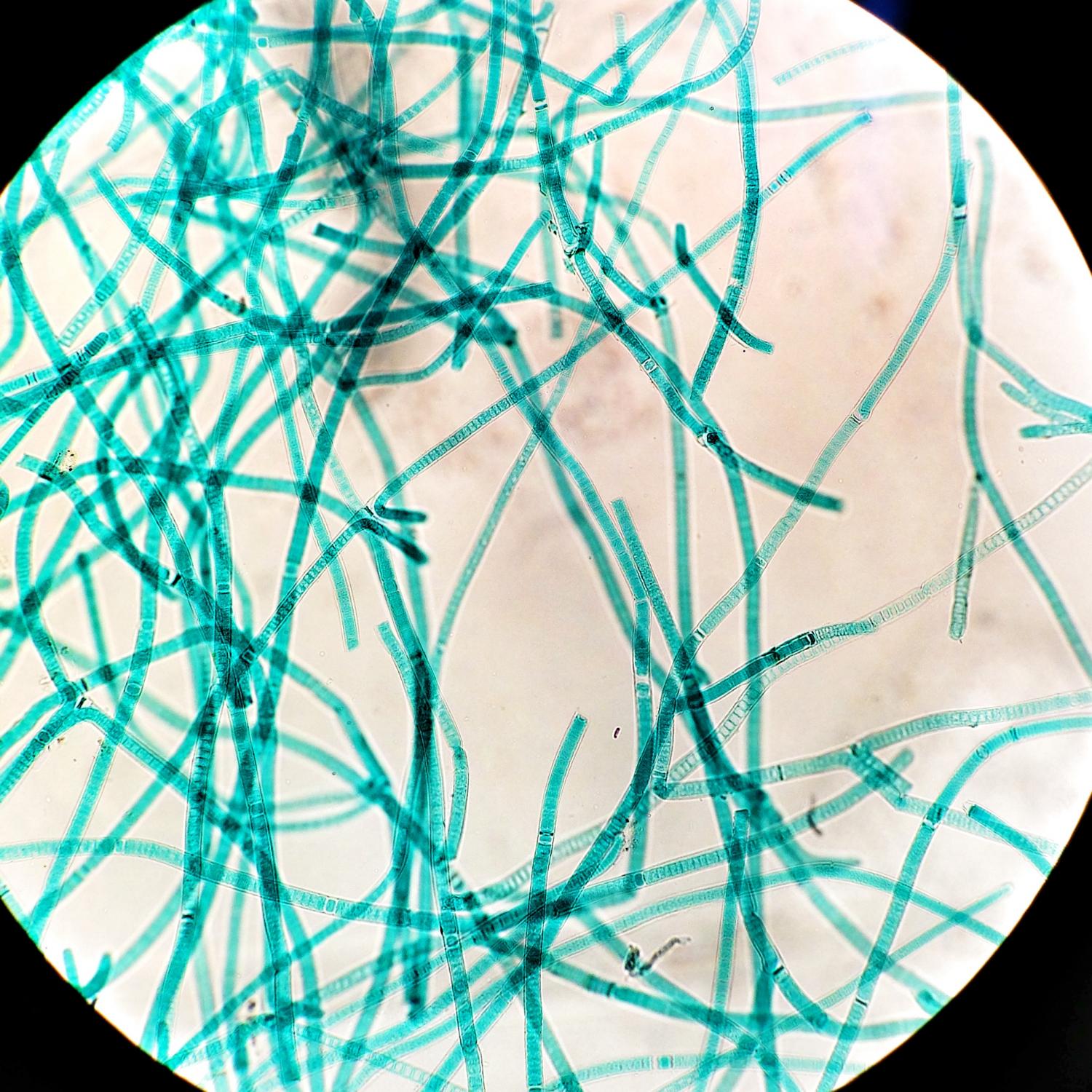An image of the cyanobacterium Tolypothrix. Source: Wikipedia / CC BY-SA 3.0
The human body’s inability to break down sucralose, an artificial sweetener found in many low-calorie food and beverage products, has been well established by scientific research. The compound is so stable that it escapes wastewater treatment and finds its way into drinking water and aquatic environments.
“We can’t break down sucralose and a lot of microorganisms can’t break it down because it’s a very tough molecule that doesn’t break down easily. So there are a lot of questions about how it affects the environment and whether it’s something that could affect our microbial communities,” said Tracey Schafer, an assistant research scientist for the University of Florida’s Whitney Laboratory for Marine Bioscience and the department of soil, water and ecosystem sciences, part of UF’s Institute of Food and Agricultural Sciences.
Schafer is a co-author of a recently published study showing how sucralose affects the behavior of cyanobacteria, an aquatic photosynthetic bacterium, and diatoms, microscopic algae that are responsible for more than 30 percent of primary food production in the marine food chain. The paper is published in the journal Environmental monitoring and assessment.
Researchers collected soil and water from a freshwater site and a brackish water site at Marineland, Florida. Back in their St. Augustine lab, they exposed samples to different sucralose concentrations and measured photosynthesis and microbial respiration in two separate time-lapse studies: every four to six hours for one day, and every 24 hours for five days.
Compared to a control group, freshwater cyanobacteria concentrations increased when samples were exposed to sucralose, but brackish cyanobacteria concentrations peaked and then declined again when a dose was administered.
“It’s possible that freshwater communities mistake sucralose for a nutrient, for a sugar that they can use as food,” said Amelia Westmoreland, lead author of the study and a research scientist who worked on the project while earning her undergraduate degree in chemistry.
Both freshwater and brackish water diatoms exposed to sucralose showed an overall decreasing trend in population compared to a control group. However, the difference between dosed samples and the control group was most pronounced in the freshwater experiments.
According to Westmoreland, sucralose can either increase or decrease the populations of microbial communities, which can pose a threat to a naturally balanced ecosystem.
“Extreme examples of how this could end are that the diatom community could disappear, and the other extreme is that this community could take over everything else,” she said.
Both Schafer and Westmoreland noted that more research is needed to fully understand sucralose and its impact on aquatic environments.
“I think this study is a good first step in exploring what impact sucralose can have on our aquatic communities, and hopefully it will stimulate more research,” Schafer said.
More information:
Amelia G. Westmoreland et al, Sucralose (C12H19Cl3O8) impact on microbial activity in estuarine and freshwater wetland soils, Environmental monitoring and assessment (2024). DOI: 10.1007/s10661-024-12610-5
Offered by the University of Florida
Quote: Study reveals environmental impact of artificial sweeteners (2024, July 8) retrieved July 9, 2024 from https://phys.org/news/2024-07-reveals-environmental-impact-artificial-sweeteners.html
This document is subject to copyright. Except for fair dealing for private study or research, no part may be reproduced without written permission. The contents are supplied for information purposes only.
